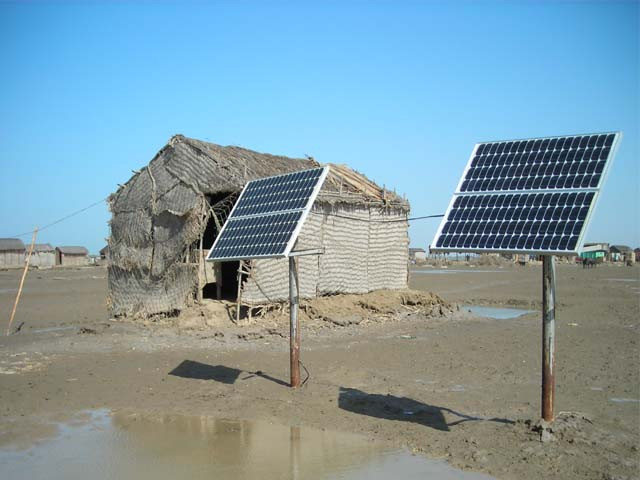Business
Home Depot stock rises 4% as retailer maintains full-year forecast

General view of a Home Depot store in Midtown Manhattan on February 26, 2025 in New York City.
Eduardo Munoz Alvarez | Corbis News | Getty Images
Home Depot stuck by its full-year outlook on Tuesday, even as the company came in slightly shy of Wall Street’s expectations for quarterly earnings and revenue.
The home improvement retailer reiterated that it expects full-year total sales to grow by 2.8% and comparable sales, which take out the impact of one-time factors like store openings and calendar differences, to rise about 1%.
However, it missed Wall Street’s earnings expectations for the second straight quarter.
Shares of Home Depot rose about 4% in early trading.
Here’s what Home Depot reported for the fiscal second quarter compared with Wall Street’s estimates, according to a survey of analysts by LSEG:
- Earnings per share: $4.68 adjusted vs. $4.71 expected
- Revenue: $45.28 billion vs. $45.36 billion expected
In the three-month period that ended Aug. 3, Home Depot’s net income was $4.55 billion, or $4.58 per share, down slightly from $4.56 billion, or $4.60 per share, in the year-ago period. Revenue rose almost 5% from $43.18 billion in the year-ago period. Adjusting for one-time items, including related to the value of intangible assets, Home Depot reported earnings of $4.68 per share.
The report is Home Depot’s first since May 2014 to fall short on both earnings and revenue expectations.
Home Depot’s results reflect that the company is still waiting for a greater pickup in home improvement activity, whether spurred on by higher housing turnover, lower mortgage rates or consumers’ own shift in mentality.
In an interview with CNBC, Chief Financial Officer Richard McPhail said the company continues to see the effects of a “deferral mindset” from homeowners, which began in roughly mid-2023.
Still, McPhail said, there are encouraging signs in the retailer’s business: Big-ticket transactions, which the company defines as over $1,000, rose 2.6% compared with the year-ago quarter. Twelve of its 16 merchandising departments posted year-over-year sales gains. And year-over-year sales trends improved in each month of the quarter, with comparable sales up 0.3% in May, 0.5% in June and 3.3% in July, he said.
“We absolutely saw momentum continue to build in our core categories throughout the quarter,” he said.
McPhail said Home Depot’s fiscal 2025 outlook does not factor in potential rate cuts by the Federal Reserve, which could spur borrowing for homebuying and bigger projects.
“We don’t embed any point of view on the rate environment changing, nor on the demand for large projects changing,” he said.
On the company’s earnings call, CEO Ted Decker said “some relief on mortgage rates, in particular, could help.” But he added that’s not the only factor on consumers’ minds when Home Depot surveys its customers and pros.
“The No. 1 reason for deferring the large project is general economic uncertainty,” he said. “That, you know, is larger than prices of projects, of labor availability, all the various things we’ve talked about in the past by a wide margin.”
Betting on the pros
As the real estate market remains sluggish and borrowing costs remain high, Home Depot has looked beyond the homeowners who come to its stores to buy kitchen appliances, cans of paint or other supplies for do-it-yourself projects. Home Depot acquired SRS Distribution, a company that sells supplies to roofing, landscaping and pool professionals, for $18.25 billion last year. It announced in June that it was buying GMS, a specialty building products distributor, for about $4.3 billion. The GMS deal is expected to close by the end of Home Depot’s fiscal year in late January, according to Home Depot.
McPhail said about 55% of Home Depot’s sales come from pros and about 45% comes from do-it-yourself customers, when including SRS.
Comparable sales increased 1% across the business and 1.4% in the U.S. during the fiscal second quarter. Home Depot said foreign exchange rates negatively impacted the company’s comparable sales by about 0.4%.
That comparable sales growth marks only the second quarter out of the last 11 that Home Depot has reported year-over-year improvement — marking its strongest performance in more than two years.
For the fiscal second quarter, McPhail said year-over-year sales on both the pro side and DIY side of the business grew. He declined to share percentage increases, but said those increases were “relatively in line with one another.”
Home Depot saw strength in categories that tend to be popular with pros, such as lumber, concrete and decking, said Billy Bastek, executive vice president of merchandising, on the company’s earnings call. On the do-it-yourself side of the business, seasonal products like grills and live goods from the gardening category did well, he said.
Online sales rose about 12% from the year-ago quarter, Bastek said. He attributed some of that to the company’s faster delivery speeds.
Tariffs have added uncertainty to the outlook for retailers, though. McPhail told CNBC in May that Home Depot did not plan to hike prices across its store, even as other retailers, including Walmart, warned that tariff-related costs would be too much to absorb.
Since May, however, U.S. tariff policies have changed. Higher tariffs began in early August on dozens of U.S. trading partners. Other major agreements remain in flux. President Donald Trump last week delayed higher U.S. tariffs on Chinese goods for another 90 days as negotiations continue.
McPhail told CNBC that Home Depot hasn’t changed its pricing approach. And, he said, most of its imported products sold in the quarter landed ahead of tariffs.
Home Depot’s customer base tends to be on stronger financial footing than U.S. consumers overall, which could help the company weather sustained higher costs. About 90% of its do-it-yourself customers own their own homes and the home pros who shop with Home Depot tend to get hired by homeowners.
Customer transactions across Home Depot’s website and stores fell in the quarter to 446.8 million compared with the 451 million in the year-ago period. Yet shoppers spent slightly more during those transactions, with the average ticket rising to $90.01 from an average ticket of $88.90 in the year-ago period. Those metrics exclude results from acquisitions SRS and HD Supply, the company said.
Home Depot’s shares ended Monday at $394.70. As of Monday’s close, the company’s shares are up roughly 1.5% so far this year. That trails the nearly 10% gain of the S&P 500 during the same period.
– CNBC’s Robert Hum contributed to this report.
Business
Private sector data: Over 2 lakh private companies closed in 5 years; govt flags monitoring for suspicious cases – The Times of India

NEW DELHI: The government on Monday said that over the past five years, more than two lakh private companies have been closed in India.According to data provided by Minister of State for Corporate Affairs Harsh Malhotra in a written reply to the Lok Sabha, a total of 2,04,268 private companies were shut down between 2020-21 and 2024-25 due to amalgamation, conversion, dissolution or being struck off from official records under the Companies Act, 2013.Regarding the rehabilitation of employees from these closed companies, the minister said there is currently no proposal before the government, as reported by PTI. In the same period, 1,85,350 companies were officially removed from government records, including 8,648 entities struck off till July 16 this fiscal year. Companies can be removed from records if they are inactive for long periods or voluntarily after fulfilling regulatory requirements.On queries about shell companies and their potential use in money laundering, Malhotra highlighted that the term “shell company” is not defined under the Companies Act, 2013. However, he added that whenever suspicious instances are reported, they are shared with other government agencies such as the Enforcement Directorate and the Income Tax Department for monitoring.A major push to remove inactive companies took place in 2022-23, when 82,125 companies were struck off during a strike-off drive by the corporate affairs ministry.The minister also highlighted the government’s broader policy to simplify and rationalize the tax system. “It is the stated policy of the government to gradually phase out exemptions and deductions while rationalising tax rates to create a simple, transparent, and equitable tax regime,” he said. He added that several reforms have been undertaken to promote investment and ease of doing business, including substantial reductions in corporate tax rates for existing and new domestic companies.
Business
Pakistan’s Textile Exports Reach Historic High in FY2025-26 – SUCH TV

Pakistan’s textile exports surged to $6.4 billion during the first four months of the 2025-26 fiscal year, marking the highest trade volume for the sector in this period.
According to the Pakistan Bureau of Statistics (PBS), value-added textile sectors were key contributors to the growth.
Knitwear exports reached $1.9 billion, while ready-made garments contributed $1.4 billion.
Significant increases were observed across several commodities: cotton yarn exports rose 7.74% to $238.9 million, and raw cotton exports jumped 100%, reaching $2.6 million from zero exports the previous year.
Other notable gains included tents, canvas, and tarpaulins, up 32.34% to $53.48 million, while ready-made garments increased 5.11% to $1.43 billion.
Exports of made-up textile articles, excluding towels and bedwear, rose 4.17%, totaling $274.75 million.
The report also mentioned that the growth in textile exports is a result of improved global demand and stability in the value of the Pakistani rupee.
Business
Peel Hunt cheers ‘positive steps’ in Budget to boost London market and investing

UK investment bank Peel Hunt has given some support to under-pressure Chancellor Rachel Reeves over last week’s Budget as it said efforts to boost the London market and invest in UK companies were “positive steps”.
Peel Hunt welcomed moves announced in the Budget, such as the stamp duty exemption for shares bought in newly listed firms on the London market and changes to Isa investing.
It comes as Ms Reeves has been forced to defend herself against claims she misled voters by talking up the scale of the fiscal challenge in the run-up to last week’s Budget, in which she announced £26 billion worth of tax rises.
Peel Hunt said: “Following a prolonged period of pre-Budget speculation, businesses and investors now have greater clarity from which they can start to plan.
“The key measures were generally well received by markets, particularly the creation of additional headroom against the Chancellor’s fiscal rules.
“Initiatives such as a stamp duty holiday on initial public offerings (IPOs) and adjustments to the Isa framework are intended to support UK capital markets and encourage investment in British companies.
“These developments, alongside the Entrepreneurship in the UK paper published simultaneously, represent positive steps toward enhancing the UK’s attractiveness for growth businesses and long-term investors.”
Ms Reeves last week announced a three-year stamp duty holiday on shares bought in new UK flotations as part of a raft of measures to boost investment in UK shares.
She also unveiled a change to the individual savings account (Isa) limit that lowers the cash element to £12,000 with the remaining £8,000 now redirected into stocks and shares.
But the Chancellor also revealed an unexpected increase in dividend tax, rising by 2% for basic and higher rate taxpayers next year, which experts have warned “undermines the drive to increase investing in Britain”.
Peel Hunt said the London IPO market had begun to revive in the autumn, although listings activity remained low during its first half to the end of September.
Firms that have listed in London over recent months include The Beauty Tech Group, small business lender Shawbrook and tinned tuna firm Princes.
Peel Hunt added that deal activity had “continued at pace” throughout its first half, with 60 transactions announced across the market during that time and 10 active bids for FTSE 350 companies, as at the end of September.
Half-year results for Peel Hunt showed pre-tax profits jumped to £11.5 million in the six months to September 30, up from £1.2 million a year earlier, as revenues lifted 38.3%.
Peel Hunt said its workforce has been cut by nearly 10% since the end of March under an ongoing savings drive, with full-year underlying fixed costs down by around £5 million.
Steven Fine, chief executive of Peel Hunt, said: “The second half has started strongly, with the group continuing to play leading roles across both mergers and acquisitions and equity capital markets mandates.”
-

 Sports1 week ago
Sports1 week agoWATCH: Ronaldo scores spectacular bicycle kick
-

 Entertainment1 week ago
Entertainment1 week agoWelcome to Derry’ episode 5 delivers shocking twist
-

 Politics1 week ago
Politics1 week agoWashington and Kyiv Stress Any Peace Deal Must Fully Respect Ukraine’s Sovereignty
-

 Business1 week ago
Business1 week agoKey economic data and trends that will shape Rachel Reeves’ Budget
-

 Tech6 days ago
Tech6 days agoWake Up—the Best Black Friday Mattress Sales Are Here
-

 Politics1 week ago
Politics1 week ago53,000 Sikhs vote in Ottawa Khalistan Referendum amid Carney-Modi trade talks scrutiny
-

 Tech23 hours ago
Tech23 hours agoGet Your Steps In From Your Home Office With This Walking Pad—On Sale This Week
-

 Fashion1 week ago
Fashion1 week agoCanada’s Lululemon unveils team Canada kit for Milano Cortina 2026


1729471601-0/image-(8)1729471601-0-640x480.webp)








